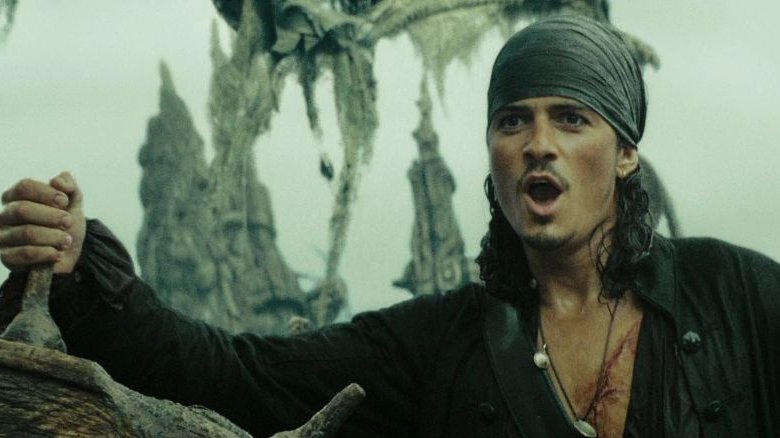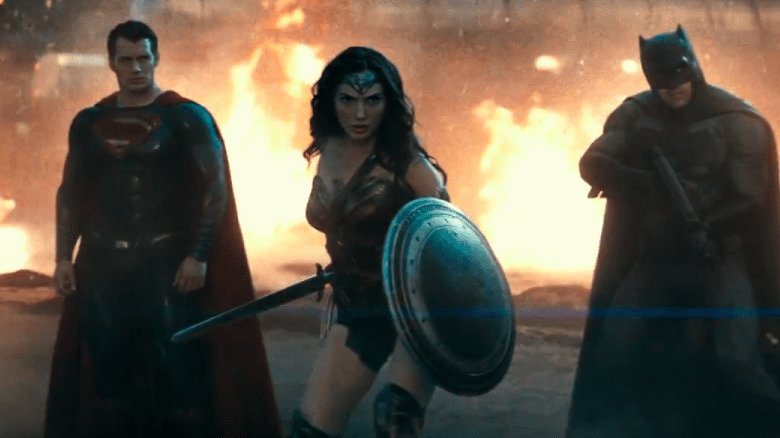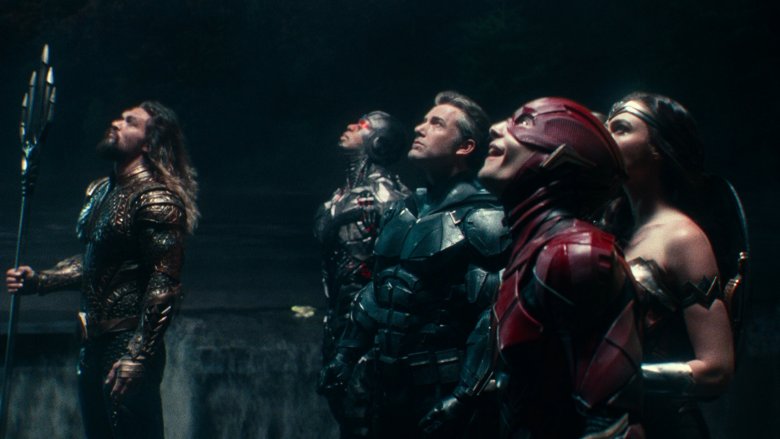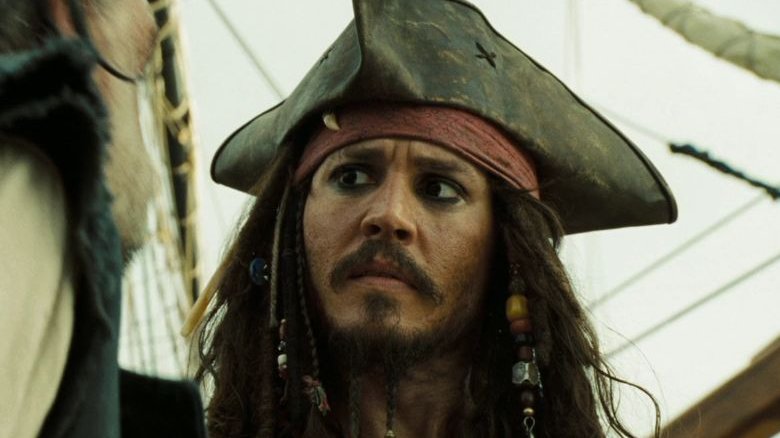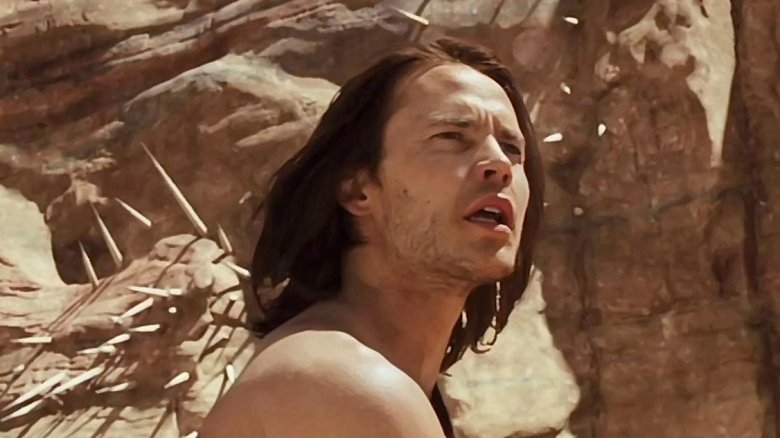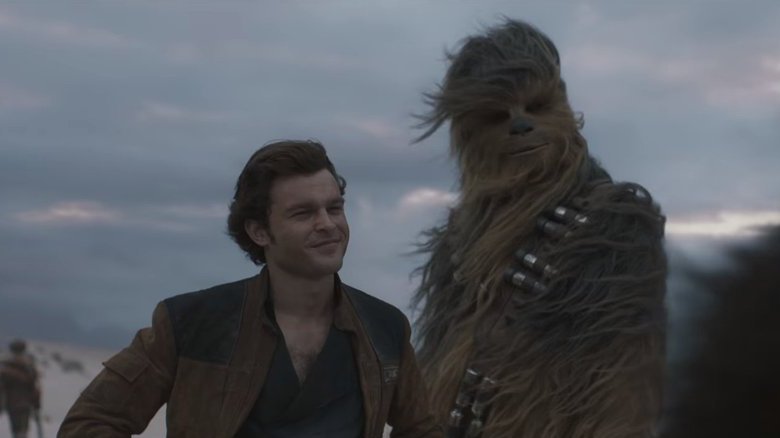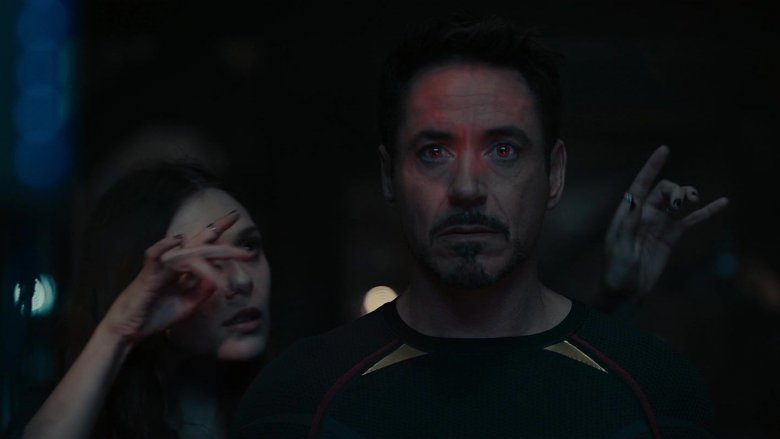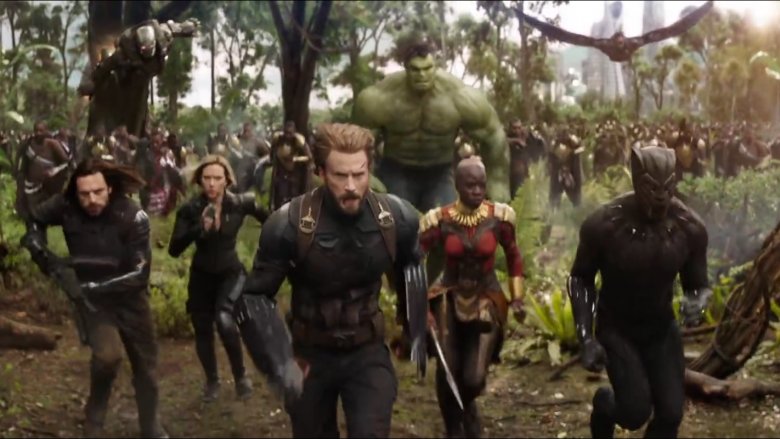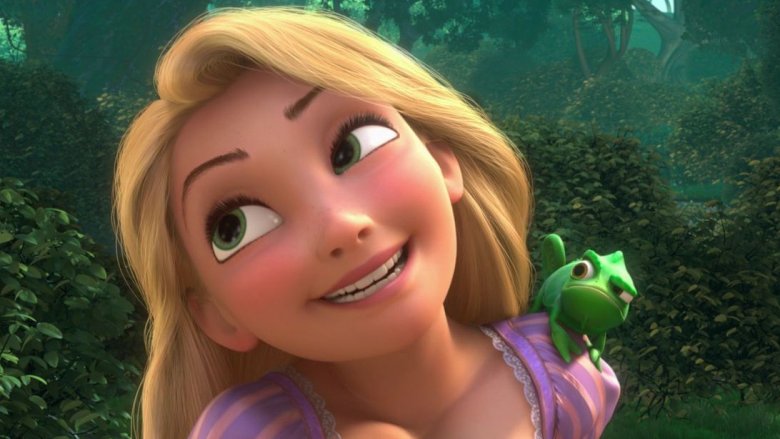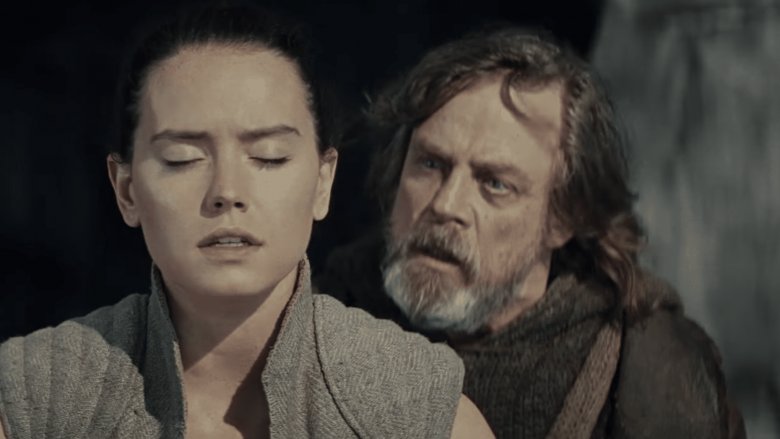The Most Expensive Movies Ranked Worst To Best
Movies are expensive to make. Even without a whole lot of stunts or special effects, getting a production off the ground requires a great deal of capital. From paying the actors, set workers, costume designers, make-up artists, caterers, best boys, and all the other hard working individuals that make the film itself, to paying for advertising and marketing, any Hollywood feature can burn through a budget of millions very easily.
But an expensive production doesn't necessarily warrant a good product, and some of the most expensive films have gone on to disappoint both audiences and critics alike. A look at the top ten most expensive movies alone shows a huge range in genre, style, tone, and audience reception... even if more than half of them have the same parent company. Here they all are, unadjusted for inflation, to provide a little insight into how filmmakers spend their budgets, and whether or not it pays off.
Batman v Superman: Dawn of Justice
Superhero movies — and the dough they rake in — are no laughing matter. No one knows that better than DC, a company who has spent the better part of the last two decades filling both its comic books and its movies with dark, humorless, dour premises in an attempt to relive the successes of graphic works like The Killing Joke or Batman: Year One. The 2016 film Batman v Superman: Dawn of Justice cost Warner Bros. about $250 million to produce, which it made back in the domestic box office — but not by a lot.
The critical consensus wasn't any better than the box office. Even generally positive reviews, like the one by Matt Zoller Seitz at RogerEbert.com, admit that the film is "a disorganized, lead-footed movie that carries itself with unearned confidence." A review from Vulture praises Gal Gadot's "infusion of joy" into what is otherwise a "dour, bombastic movie." Gadot would go on to headline the Wonder Woman film the following year to much more amicable critique. It really is a shame that a film centered on two of the most iconic superheroes of all time has apparently failed so spectacularly in bringing audiences the saviors they so desperately wanted to see.
Pirates of the Caribbean: On Stranger Tides
The fourth installment in Disney's Pirates of the Caribbean series and the first to not be directed by Gore Verbinski, On Stranger Tides was a letdown to anyone who enjoyed the insulated trilogy at the outset of the franchise. Too bad, too, since it's the most expensive movie ever, with a cost of $410 million. It made back a little more than half of that at the domestic box office, but managed to make over $1 billion across the international market.
The Ebert review describes the film as "too much of a muchness," with the intertwining threads of the Fountain of Youth, a mermaid love story, and Jack Sparrow's erstwhile relationship with Blackbeard's fierce daughter, Angelica, liberally peppered with over-the-top gags. Ian McShane as Blackbeard and Penelope Cruz as Angelica bring some serious star power to back up Johnny Depp's increasingly overcooked embodiment of Captain Jack, and it's a shame that they did not have better material to work with. Thank God for Geoffrey Rush, who was clearly born to play a pirate captain and continues to do so with aplomb.
Justice League
The next installment in DC's cinematic universe fared a little better than its showdown-themed predecessor. Justice League had the benefit of introducing some new characters to liven up the somber setting, including The Flash (Ezra Miller), Aquaman (Jason Momoa), and Cyborg (Ray Fisher). Instead of focusing on the conflict between Bruce Wayne and Clark Kent, Justice League touts a more tried-and-true comic trope: the domination of mankind through the assemblage of arcane artifacts of great and mysterious power.
The film cost $300 million and didn't quite make it back at the domestic box office — possibly because audiences had already felt burned by Batman v Superman. The Ebert review by Matt Zoller Sietz is much more congratulatory with this chapter in DC's film oeuvre, however, stating that it is "an ensemble adventure that's nearly as satisfying (and humble in its aims) as the 'Avengers' movies," and generally praising its more upbeat and sensitive tone.
Pirates of the Caribbean: At World's End
The third film in the Pirates of the Caribbean series was not quite as good as the first two, though it did wrap up the insulated story of Will Turner (Orlando Bloom), Elizabeth Swann (Kiera Knightley), and Davy Jones (Bill Nighy) somewhat satisfactorily. Despite having a truly chilling and excellent opening scene, the film struggles with pacing, cramming a lot of action into the back half and inundating the audience with too many distinct plot lines to tie it up neatly.
Like Justice League, this confounding film cost $300 million to make and barely made that back at the domestic box office. A review from The Guardian beseeches audiences to "turn off your confused brain and simply give your eyes a treat. There's always something to marvel at." And at the end of the day, aren't we all just looking for adventures on the high seas when it comes to a pirate flick? While it's better that Will and Elizabeth are now out of the picture for the foreseeable future, it is a disappointment to see Elizabeth eschew her title of Pirate King in favor of raising Will's child — as though she couldn't be a badass pirate mom!
John Carter
Based on a turn-of-the-20th-century novel by Edgar Rice Burroughs, 2012's John Carter weaves a tale of mystical space travel in the 1860s. Comics fans might recognize the character and premise through Dejah Thoris, John Carter's Martian wife who has her own spin-off comics series through Dynamite Entertainment. One probably does not expect a huge hit from a sci-fi pulp classic, and surely John Carter, even with its lofty cost of $275 million, was probably doomed to never be a box office dominator. Still, it is widely regarded as a flawed but decently fun film, with an Atlantic review praising, "there is a hokey charm to John Carter, a clear understanding that, at the end of the day, we are there to have fun." There is also a giant, six-legged CGI Martian dog named Woola, so really it's hard to be disappointed if you go into this flick without trying to get too cerebral about it.
Solo: A Star Wars Story
Star Wars fans are a notoriously polarized crew, with many feeling that they don't want the series to deviate too far from its '70s origins and others enthusiastically embracing each new chapter and development in the sprawling saga, which now encompasses not only film but television, comic books, novels, and of course, countless toys and other merchandise. The pre-original-series installments such as Rogue One and Solo have been an interesting addition to the overall lore. Solo in particular was met with some hesitance, for it is hard to imagine anyone other than Harrison Ford playing the sardonic, seemingly self-important smuggler with a hidden heart of gold.
With a production budget of $250 million, a great deal of expectation was placed on Solo to perform well at the box office. Unfortunately, it didn't quite break even at the domestic level, but the general consensus is that it is an overall fun movie that delivers the fast-paced adventure that fans want. And much like Rogue One before it, Solo provides audiences with another sassy, lovable droid in the form of L3 — what more can you ask for?
Avengers: Age of Ultron
It should be no surprise that two of the more recent Avengers films cost a great deal to make, especially since Marvel and Disney have managed to create a complex, self-referential movie franchise that pretty well requires viewers to keep up with the most recent installments in order to avoid spoilers and keep themselves abreast of the story thus far. Age of Ultron, the follow up to the simply-titled original Avengers film, sets the stage for Infinity War and Endgame after it, setting in motion the concept of joining the Infinity Stones, as well as introducing the character of the Vision. It cost a little over $330 million to make, which it easily exceeded at the domestic box office — and then completely crushed once it hit foreign cinemas. And critics generally praised it as another fun, forward-pushing segment in the saga, though some did mention the growing weariness that comes with following such a long, drawn-out story over so many films.
Avengers: Infinity War
With a production budget of about $300 million, Infinity War also Hulk-smashed the box office with ease. Introducing a truly impossible-to-defeat villain in the form of Thanos (Josh Brolin) and endangering half the population of the entire universe, Infinity War raised the stakes to completely astronomical heights — and then left audiences hooked and hanging, desperately waiting for the closure to come with Endgame. Critic responses were mostly positive, acknowledging the scope of the film and all it manages to accomplish. Meanwhile, some perhaps rightly criticized the enormity of it in both cast and in scale, wondering why it's always the universe that needs saving, as opposed to a more relatable threat like the ones our friendly neighborhood Spider-Man fends off in New York City. Still, it is hard to deny that Infinity War is a grand event, a fitting penultimate picture in a grand, epic saga that has spanned over a decade of film.
Tangled
Tangled is the only animated feature on this list, with its $260 million in production costs reflecting its false start and subsequent total overhaul. And though the story of Rapunzel is a familiar one, this adaptation manages to keep it fresh, injecting the titular long-haired maiden with a profound sense of curiosity and liveliness that otherwise goes unmentioned in the Grimm original. Princesses may be more of the last century's film fare, but Tangled was still met with generally positive reviews that praise its ability to balance vintage Disney sensibilities with an updated take on the classic princess tropes. If there's any company that knows how to nail a princess film, it's Disney, and Rapunzel is a fun, fierce, and funny role model for a new generation of children — and one who also appeals to their parents, who remember Disney's Grimm adaptations of old.
Star Wars: The Last Jedi
It's no real surprise that top of the list is the latest installment in one of the most beloved film franchises of all time. Star Wars: The Last Jedi cost about $317 million to make, and with that budget it gifted audiences with a visually lush, emotionally charged ride through space, tying up some beloved character arcs just as it allowed newer ones to unfold. Despite Disney's outlandish terms for screening the film, The Last Jedi did great at the box office, and many critics agree that it was a triumph that stayed fresh while keeping true to the vision of Lucas' original trilogy.
It has been hard to wait for the final installment in this newest rash of Star Wars films, but if The Rise of Skywalker is anything near as affecting as The Last Jedi, audiences will need to remember to bring along their hankies. Until then, we'll all just have to rewatch that truly epic throne room fight scene and the standoff between Kylo Ren and Luke Skywalker to get ourselves all hyped up for the finale that has been over 40 years in the making.
